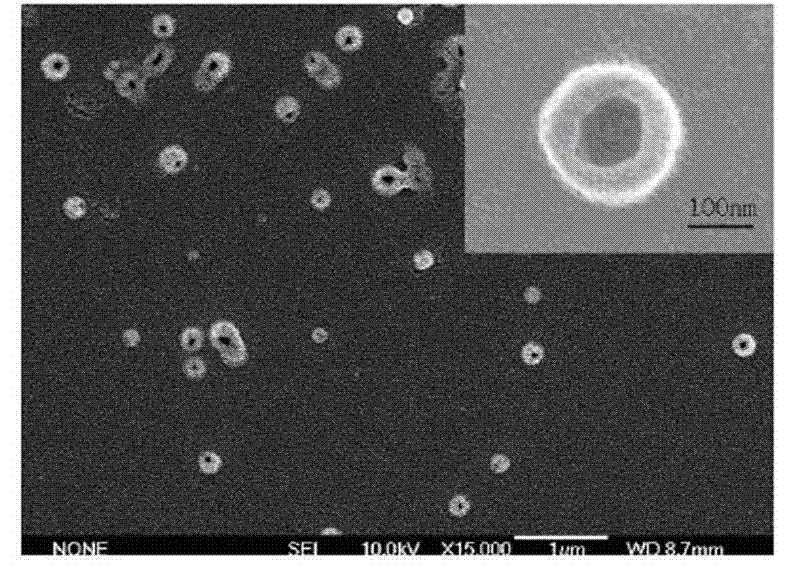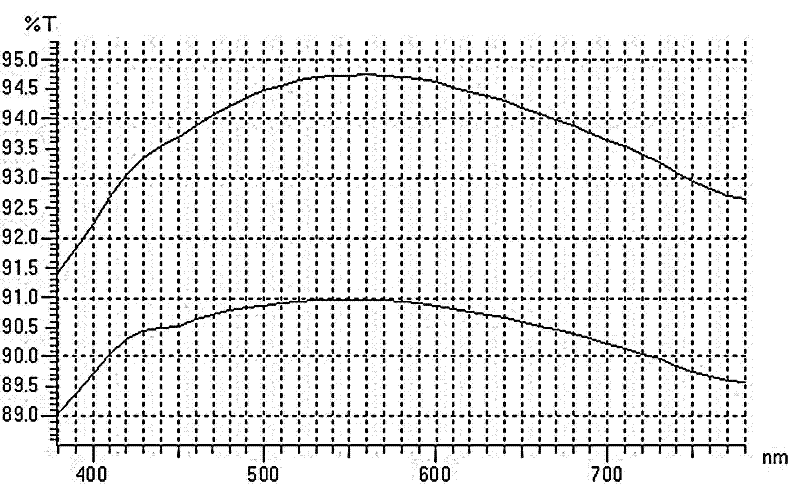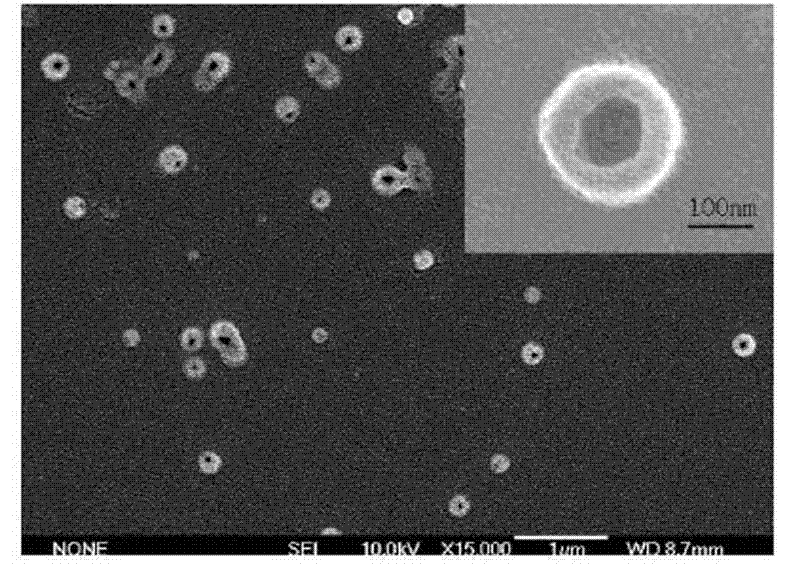Preparation method of efficient increased-transmission and antireflection glass
A glass and high-efficiency technology, which is applied in the field of preparation of high-efficiency anti-reflection and anti-reflection glass, can solve the problems of inaccurate control of the refractive index of the film, easy peeling performance of the film, poor bonding force, etc., and achieve obvious anti-reflection effect, low cost, and enhanced binding effect
- Summary
- Abstract
- Description
- Claims
- Application Information
AI Technical Summary
Problems solved by technology
Method used
Image
Examples
Embodiment 1
[0018] Mix and heat 0.12 mol of water, 0.04 mol of ammonia water and 3 mol of anhydrous ethanol. When the temperature reaches the set temperature of 35°C, add 0.04 mol of tetraethyl orthosilicate, keep constant temperature, and continue stirring for 21 hours to obtain silica nanoparticle dispersion. solution, and then slowly add polystyrene latex balls with a diameter of 105 nm into the dispersion of silica nanoparticles and stir with a volume ratio of 2.6:1 to obtain a blended solution for use.
[0019] A roll coating method is used to coat the cleaned photovoltaic glass surface to obtain a transparent film. The coated photovoltaic glass is sintered at a temperature of 500° C. for 18 minutes to obtain high-efficiency anti-reflection and anti-reflection glass.
[0020] figure 1 It shows that the prepared film is a silicon dioxide film with porous cavity morphology, and the refractive index of the film layer is controlled; analysis figure 2 , we found that the transmittance ...
Embodiment 2
[0022] Mix and heat 0.4mol water, 0.4mol hydrochloric acid and 12mol ethylene glycol with stirring, and when the temperature reaches the set temperature of 20°C, add 0.04mol methyl orthosilicate, keep constant temperature, and continue stirring for 2 hours to obtain silica nanoparticle dispersion solution, and then slowly add polystyrene latex balls with a diameter of 10 nm into the dispersion of silica nanoparticles and stir at a volume ratio of 1:5 to obtain a blended solution for use.
[0023] A roll coating method is used to coat the cleaned photovoltaic glass surface to obtain a transparent film. The coated photovoltaic glass was sintered at 700°C for 5 minutes to obtain high-efficiency anti-reflection and anti-reflection glass. After testing, the transmittance of the anti-reflection glass increased by 2.6%.
Embodiment 3
[0025] Mix and heat 0.004mol of water, 0.002mol of sodium hydroxide and 0.4mol of propanol, and when the temperature reaches the set temperature of 50°C, add 0.04mol of methyl orthosilicate, keep constant temperature, and continue stirring for 40 hours to obtain silica nano Particle dispersion, and then slowly add polystyrene latex balls with a diameter of 200nm into the silica nanoparticle dispersion and stir at a volume ratio of 5:1 to obtain a blended solution for use.
[0026] Coating is carried out on the cleaned photovoltaic glass surface by a spraying method to obtain a transparent film. The coated photovoltaic glass was sintered at 300°C for 30 minutes to obtain high-efficiency anti-reflection and anti-reflection glass. After testing, the transmittance of the anti-reflection glass increased by 2.5%.
PUM
| Property | Measurement | Unit |
|---|---|---|
| Diameter | aaaaa | aaaaa |
| Diameter | aaaaa | aaaaa |
| Diameter | aaaaa | aaaaa |
Abstract
Description
Claims
Application Information
 Login to View More
Login to View More - R&D
- Intellectual Property
- Life Sciences
- Materials
- Tech Scout
- Unparalleled Data Quality
- Higher Quality Content
- 60% Fewer Hallucinations
Browse by: Latest US Patents, China's latest patents, Technical Efficacy Thesaurus, Application Domain, Technology Topic, Popular Technical Reports.
© 2025 PatSnap. All rights reserved.Legal|Privacy policy|Modern Slavery Act Transparency Statement|Sitemap|About US| Contact US: help@patsnap.com



